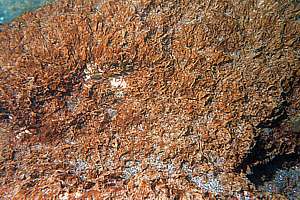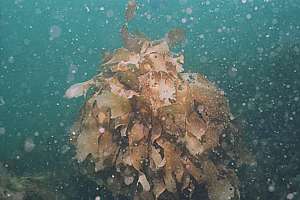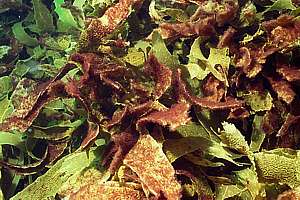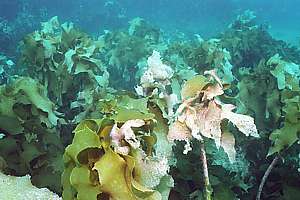 f036804: The kelp forest is thinning out well above its lower
boundary (9m). No competition, no new recruits, no grazers, no sessile
filterfeeders as the habitat is slowly occupied by turfing coralline algae.
This is seen in many places, all the way to Cape Brett. This is Arid Island
2003.
f036804: The kelp forest is thinning out well above its lower
boundary (9m). No competition, no new recruits, no grazers, no sessile
filterfeeders as the habitat is slowly occupied by turfing coralline algae.
This is seen in many places, all the way to Cape Brett. This is Arid Island
2003. |
 f036819: a vertical wall has lost all its sessile filterfeeders
and is now covered in algae. On a ledge, a number of surviving sponges
are found, recovering from a recent disaster. The ones seen here all hardy
ones, belonging to the inner Hauraki Gulf rather than to Arid Island. Notice
stunted growth of fingersponge.
f036819: a vertical wall has lost all its sessile filterfeeders
and is now covered in algae. On a ledge, a number of surviving sponges
are found, recovering from a recent disaster. The ones seen here all hardy
ones, belonging to the inner Hauraki Gulf rather than to Arid Island. Notice
stunted growth of fingersponge. |



















































